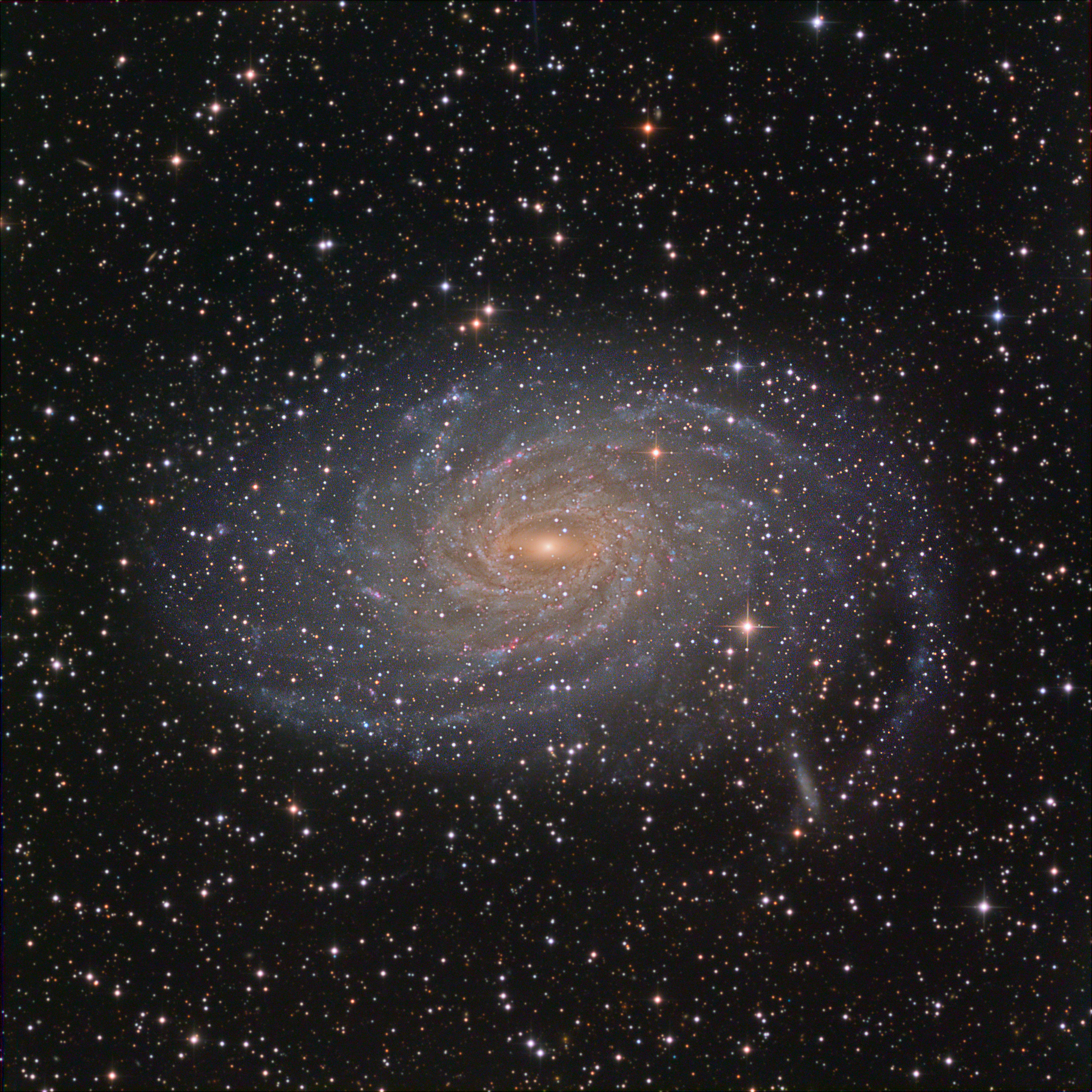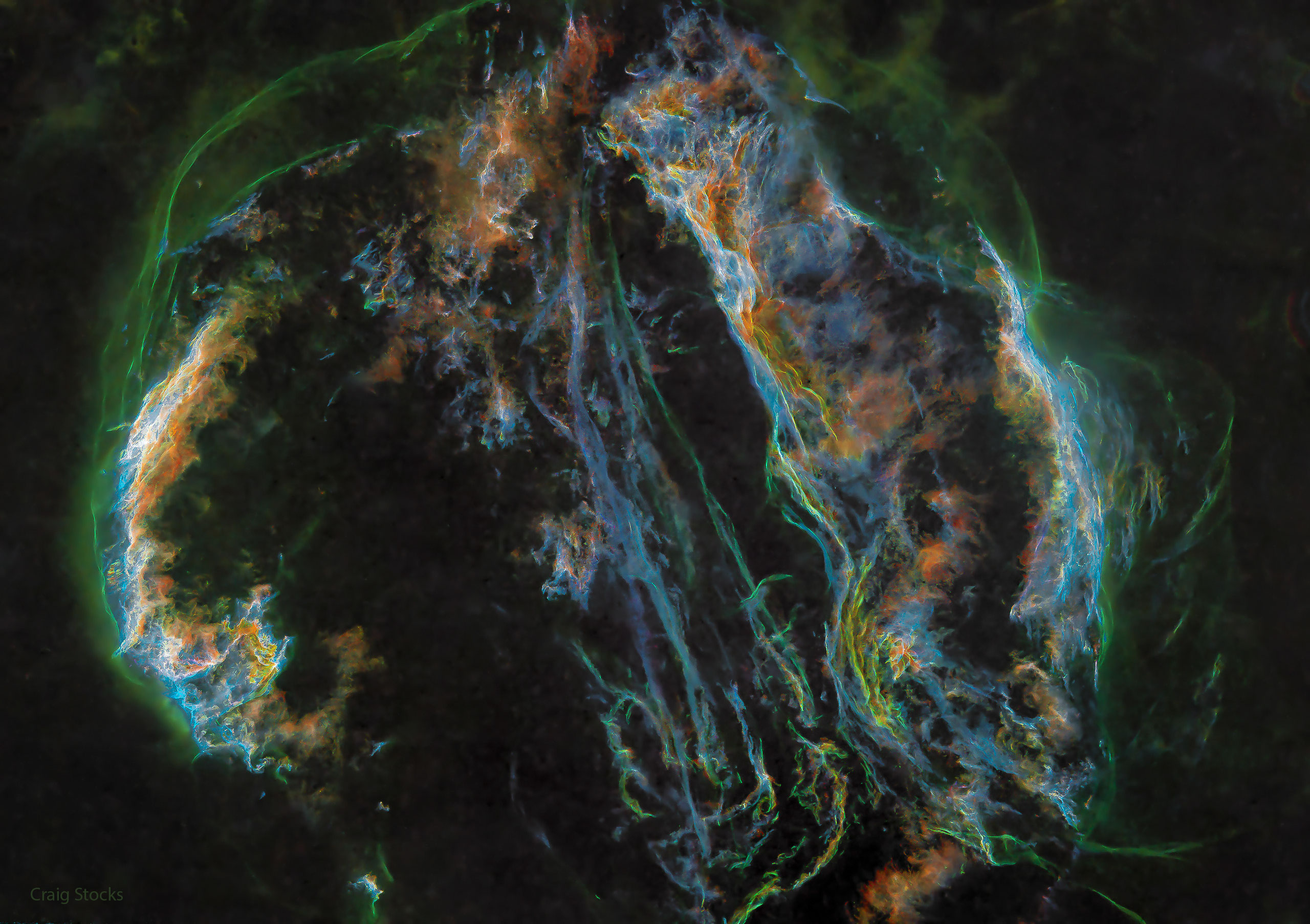Blog
Geoffrey Arnold Beck (born 24 June 1944) is an English rock guitarist. He rose to prominence with the Yardbirds and after fronted the Jeff Beck Group and Beck, Bogert & Appice. In 1975, he switched to a mainly instrumental style, with a focus on innovative sound, and his releases have spanned genres ranging from blues rock, hard rock, jazz fusion and a blend of guitar-rock and electronica.
Beck is considered among the greatest guitar players in history with Rolling Stone, upon whose cover he has appeared three times, describing him as “one of the most influential lead guitarists in rock”. He is often called a “guitarist’s guitarist”. Although he recorded two hit albums (in 1975 and 1976) as a solo act, Beck has not established or maintained the sustained commercial success of many of his contemporaries and bandmates. However, he has recorded with many artists.
Beck has earned wide critical praise and received the Grammy Award for Best Rock Instrumental Performance six times and Best Pop Instrumental Performance once. In 2014 he received the British Academy’s Ivor Novello Award for Outstanding Contribution to British Music. Beck has been inducted into the Rock and Roll Hall of Fame twice: as a member of the Yardbirds (1992) and as a solo artist (2009).
more...Terrence Mitchell Riley (born June 24, 1935), is an American composer and performing musician best known as a pioneer of the minimalist school of composition. Influenced by jazz and Indian classical music, his music became notable for its innovative use of repetition, tape musictechniques, and delay systems. His best known works are the 1964 composition In C and the 1969 LP A Rainbow in Curved Air, both considered landmarks of minimalism and important influences on experimental, rock, and contemporary electronic music.
Raised in California, Riley began studying composition and performing solo piano in the 1950s. He befriended and collaborated with composer La Monte Young, and later became involved with the San Francisco Tape Music Center. A two-record deal with CBS in the late 1960s, resulting in an LP recording of In C (1968) and A Rainbow in Curved Air (1969), brought his work to wider audiences. In the 1970s, he began intensive studies under Hindustani singer Pandit Pran Nath, whom he often accompanied in performance. He has collaborated frequently throughout his career, most extensively with chamber ensemble the Kronos Quartet and his son, guitarist Gyan Riley.
Born in Colfax, California, in 1935, Riley began performing as a solo pianist during the 1950s. During that decade, he studied composition at San Francisco State University, the San Francisco Conservatory, and University of California, Berkeley, studying with Seymour Shifrin and Robert Erickson. He befriended composer La Monte Young, whose earliest minimalist compositions using sustained tones were an influence; together, Young and Riley performed Riley’s improvisatory composition Concert for Two Pianists and Tape Recorders in 1959–60.
more...Tangos Gitanos is one of a variety of musical styles found in the Spanish-speaking world called “tango.” Like the Tango Argentino, Tangos Gitanos roots lie in the way African and Caribbean music blended with Spanish music in 18th and 19th century Latin America. Similar to it’s South American cousin, Tango Gitano consists of a simple, easily varied harmonic and melodic structure over a four-count rhythm. Unlike other four-count patterns, the first beat is weak while the other three beats are strong. As Tangos became a part of flamenco in the 19th century, certain aspects of older flamenco forms were folded into it, including 12-count soleares letras re-shaped to fit the four count rhythmic pattern. Tangos of Granada shows traces of Moorish Zambras, while the Tango de Cádiz, Tanguillos, is a compound rhythm of triplets and duplets.
https://www.youtube.com/watch?v=JG7hqN_fMB8
more...Beautiful spiral galaxy NGC 6744 is nearly 175,000 light-years across, larger than our own Milky Way. It lies some 30 million light-years distant in the southern constellation Pavo but appears as only a faint, extended object in small telescopes. We see the disk of the nearby island universe tilted towards our line of sight in this remarkably detailed galaxy portrait, a telescopic view that spans an area about the angular size of a full moon. In it, the giant galaxy’s elongated yellowish core is dominated by the light from old, cool stars. Beyond the core, grand spiral arms are filled with young blue star clusters and speckled with pinkish star forming regions. An extended arm sweeps past smaller satellite galaxy NGC 6744A at the lower right. NGC 6744’s galactic companion is reminiscent of the Milky Way’s satellite galaxy the Large Magellanic Cloud.

Robert C. Christie Hunter (born Robert Burns; June 23, 1941 – September 23, 2019) was an American lyricist, singer-songwriter, translator, and poet, best known for his work with the Grateful Dead. Born near San Luis Obispo, California, Hunter spent some time in his childhood in foster homes, as a result of his father’s abandoning his family, and took refuge in reading and writing. He attended the University of Connecticut for a year before returning to Palo Alto, where he became friends with Jerry Garcia. Garcia and Hunter began a collaboration that lasted through the remainder of Garcia’s life.
Garcia and others formed the Grateful Dead in 1965, and some time later began working with lyrics that Hunter had written. Garcia invited him to join the band as a lyricist, and Hunter contributed substantially to many of their albums, beginning with Aoxomoxoa in 1969. Over the years Hunter wrote lyrics to a number of the band’s signature pieces, including “Dark Star“, “Ripple“, “Truckin’“, “China Cat Sunflower“, and “Terrapin Station“. Hunter was inducted into the Rock and Roll Hall of Fame with the Grateful Dead in 1994, and is the only non-performer to be inducted as a member of a band.Upon his death, Rolling Stone described him as “one of rock’s most ambitious and dazzling lyricists”.
Hunter was born Robert Burns on June 23, 1941 in Arroyo Grande, California, near San Luis Obispo.
more...Sahib Shihab (born Edmund Gregory; June 23, 1925 – October 24, 1989) was an American jazz and hard bop saxophonist (baritone, alto, and soprano) and flautist. He variously worked with Luther Henderson, Thelonious Monk, Fletcher Henderson, Tadd Dameron, Dizzy Gillespie, Kenny Clarke, John Coltrane and Quincy Jones among others.
He was born in Savannah, Georgia, United States. Edmund Gregory first played alto saxophone professionally for Luther Henderson aged 13, and studied at the Boston Conservatory, and to perform with trumpeter Roy Eldridge. He played lead alto with Fletcher Henderson in the mid-1940s.
He was one of the first jazz musicians to convert to Islam and changed his name in 1947. During the late 1940s, Shihab played with Thelonious Monk, and on July 23, 1951 he recorded with Monk (later issued on the album Genius of Modern Music: Volume 2). During this period, he also appeared on recordings by Art Blakey, Kenny Dorham and Benny Golson. The invitation to play with Dizzy Gillespie‘s big band in the early 1950s was of particular significance, as it marked Shihab’s switch to baritone.
more...George Allen Russell (June 23, 1923 – July 27, 2009) was an American jazz pianist, composer, arranger and theorist. He is considered one of the first jazz musicians to contribute to general music theory with a theory of harmony based on jazz rather than European music, in his book Lydian Chromatic Concept of Tonal Organization (1953).
Russell was born in Cincinnati, Ohio to a white father and a black mother, later the adopted only child of a nurse and a chef on the B & O Railroad, Bessie and Joseph Russell. Young Russell sang in the choir of the African Methodist Episcopal Church and listened to the Kentucky Riverboat music of Fate Marable. He made his stage debut at age seven, singing “Moon Over Miami” with Fats Waller.
more...Milton John Hinton (June 23, 1910 – December 19, 2000) was an American double bassist and photographer.
Regarded as the Dean of American jazz bass players, his nicknames included “Sporty” from his years in Chicago, “Fump” from his time on the road with Cab Calloway, and “The Judge” from the 1950s and beyond. Hinton’s recording career lasted over 60 years, mostly in jazz but also with a variety of other genres as a prolific session musician.
He was also a photographer of note, praised for documenting American jazz during the 20th Century.
Hinton was born in Vicksburg, Mississippi, United States, the only child of Hilda Gertrude Robinson, whom he referred to as “Titter,” and Milton Dixon Hinton. He was three-months-old when his father left the family. He grew up in a home with his mother, his maternal grandmother (whom he referred to as “Mama”), and two of his mother’s sisters.
more...







https://www.rcaanc-cirnac.gc.ca/…/1100100…/153487458315
Ten thousand years ago, before the dawn of recorded human history, a new light would have suddenly have appeared in the night sky and faded after a few weeks. Today we know this light was from asupernova, or exploding star, and record the expanding debris cloud as the Veil Nebula, a supernova remnant. Imaged with color filters featuring light emitted by sulfur (red), hydrogen (green), and oxygen (blue), this deep wide-angle view was processed to remove the stars and so better capture the impressive glowing filaments of the Veil. Also known as the Cygnus Loop, the Veil Nebula is roughly circular in shape and covers nearly 3 degrees on the sky toward the constellation of the Swan (Cygnus). Famous nebular sections include the Bat Nebula, the Witch’s Broom Nebula, and Fleming’s Triangular Wisp. The complete supernova remnant lies about 1,400 light-years away.

Todd Harry Rundgren (born June 22, 1948) is an American multi-instrumentalist, singer, songwriter, multimedia artist, sound engineer and record producer who has performed a diverse range of styles as a solo artist and as a member of the band Utopia. He is known for his sophisticated and often unorthodox music, his occasionally lavish stage shows, and his later experiments with interactive entertainment. He also produced music videos and was an early adopter and promoter of various computer technologies, such as using the Internet as a means of music distribution in the late 1990s.
A native of Philadelphia, Rundgren began his professional career in the mid 1960s, forming the psychedelic band Nazz in 1967. Two years later, he left Nazz to pursue a solo career and immediately scored his first US top 40 hit with “We Gotta Get You a Woman” (1970). His best-known songs include “Hello It’s Me” and “I Saw the Light” from Something/Anything? (1972), which get frequent air time on classic rock radio stations, and the 1983 single “Bang the Drum All Day“, which is featured in many sports arenas, commercials, and movie trailers. Although lesser known, “Couldn’t I Just Tell You” (1972) was influential to many artists in the power pop genre. His 1973 album A Wizard, a True Star remains an influence on later generations of bedroom musicians.
Rundgren is considered a pioneer in the fields of electronic music, progressive rock, music videos, computer software, and Internet music delivery.He organized the first interactive television concert in 1978, designed the first color graphics tablet in 1980, and created the first interactive album, No World Order, in 1994. Additionally, he was one of the first acts to be prominent as both an artist and producer. His notable production credits include Badfinger‘s Straight Up (1971), Grand Funk Railroad‘s We’re an American Band (1973), the New York Dolls‘ New York Dolls (1973), Meat Loaf‘s Bat Out of Hell (1977), and XTC‘s Skylarking (1986). He was inducted into the Rock and Roll Hall of Fame in 2021.
more...Hermeto Pascoal (born June 22, 1936) is a Brazilian composer and multi-instrumentalist. He was born in Lagoa da Canoa, Alagoas, Brazil. Pascoal is a significant figure in the history of Brazilian music, mainly known for his abilities in orchestration and improvisation, as well as being a record producer and contributor to many Brazilian and international albums. Pascoal comes from northeastern Brazil, in an area that lacked electricity at the time he was born. He learned the accordion from his father and practised for hours indoors as, being albino, he was incapable of working in the fields with the rest of his family.
Hermeto’s career began in 1964 with appearances on several Brazilian recordings alongside relatively unknown groups. These now-classic albums and the musicians involved (Edu Lobo, Elis Regina, Cesar Camargo Mariano) established widely influential new directions in post-bossa nova Brazilian jazz.
more...Raymond Mantilla (June 22, 1934 – March 21, 2020) was an American percussionist
Ray Mantilla, a percussionist and bandleader who led a prolific jazz career for more than half a century, died on Saturday, at New York-Presbyterian/Columbia University Medical Center. He was 85. The cause was complications of lymphoma, said his brother, Kermit Mantilla, who was at his bedside when he passed.
Mantilla played on hundreds of recordings, including some that have become important parts of jazz history, like Max Roach’s M’Boom, Herbie Mann’s Flute, Brass, Vibes and Percussion and Charles Mingus’s Cumbia & Jazz Fusion. He was one of the three most recorded conga players in the history of jazz; he held that distinction with Ray Barretto and Cándido Camero.
Like Cándido, one of his heroes, Mantilla championed the use of multiple congas, employing up to four drums at times, each tuned to a specific pitch. Also like Cándido, he championed the performance of solo pieces on congas.
But Mantilla was, as he liked to put it, the complete percussionist — skilled not only on congas but also a range of other instruments. “I loved the way Ray played charanga-style timbales,” Barretto once said. “Remember, you have only one bell to keep time accompanying the flute and violins, and you have to play rock-solid time with swing.”
Mantilla described his own music as “Latin Jazz with authentic Latino rhythms.” He released nine albums as a leader. His first was Mantilla, in 1978, and his most recent was High Voltage, almost 40 years later. He recorded a follow-up, Rebirth, scheduled for release this year on Savant Records.
“It’s a combination of the familiar and the eclectic,” said longtime Mantilla associate Mike Freeman, who plays vibraphone on that album. The title, Rebirth, he explained, “is a reference to Ray surviving cancer two years ago.”
Raymond Mantilla was born in St. Francis Hospital in the South Bronx on June 22, 1934. His father, Carlos Mantilla Ghilardi, was an architect and engineer who was recruited to work on the building of the George Washington Bridge. He then began working for the U.S. Intelligence Services in a branch in Peru, just before the United States’ entry into World War II. Ray’s mother, Ramona Maldonado, hailed from the city of Vega Baja in Puerto Rico, and owned and operated a bodega in the South Bronx. Ray’s childhood friends included some of the major forces in the Afro-Cuban music scene that became redefined by New York’s City’s Puerto Rican community into what we know as salsa. Among them were timbalero Orlando Marin, percussionist Manny Oquendo, pianist Eddie Palmieri, flutist and percussionist Johnny Pacheco, and percussionist Benny Bonilla.
Bonilla, who played timbales on the seminal Latin Boogaloo hit “I Like It Like That,” met Mantilla at age 15. “He and I would practice our conga beats to 78 vinyl records,” he said. “Ray stressed a steady and good left hand.”
But Mantilla’s closest childhood friend was Barretto, a pioneering conga player who became an NEA Jazz Master in 2006, one month before his death at 76. “Me and Ray were like peas in a pod,” Mantilla once recalled. “He got me into the studios, since he would send me to cover dates he couldn’t do. Between Ray, Johnny Pacheco, Willie Rodriguez, Cándido, and me, we were doing all the Latin percussion work on studio sessions in New York.”
Barretto also made a fateful introduction when he recommended Mantilla to Mann, a flutist leading a widely popular Latin jazz band. Barretto and Mantilla played together on a handful of albums by Mann at the dawn of the ‘60s, including The Common Ground and The Family of Mann — but by the time of Herbie Mann at The Village Gate in ’61, Barretto had moved on, and given Mantilla his blessing.
His work with Mann, and his association with Barretto, brought Mantilla to the attention of prominent jazz bandleaders like Mingus, Roach, Art Blakey and many more. “I always liked the freedom in jazz and I dug the scene as well,” he said. “You could be more creative, looser. After a while I just stopped doing gigs on the Latin scene altogether unless I was called as a guest soloist.”
In 1972, Mantilla was asked to join Roach’s percussion ensemble M’Boom, which had been formed two years earlier. “I was impressed by Ray when I saw him with Art Blakey because I liked the way he navigated his role in the group,” recalls founding member Joe Chambers, who recommended him for the gig. “He demonstrated the drummer’s philosophy as it was taught to me, to accompany. He never overplayed.”
Warren Smith, another member of M’Boom, recalls: “Ray understood the subtle nuances in African, Latin, and jazz-based music and he adapted beautifully. The first time he played with us it was seamless. What also impressed me was the variety of solo contexts he could do. He could play solo on bongos, congas, whatever, and hold the audience. He was also funny as an emcee. When we performed in Barcelona, Max let him speak to the audience in Spanish. He had them in the palm of his hand introducing each one of us with funny quips and jokes.”
For Mantilla, M’Boom was an opportunity to expand his musicianship. “I had to learn to play mallet parts on vibes, xylophone, etc. I had never done that before. It was great. They showed me that and I had a chance to show the guys how to play hand drums and the percussion in an authentic way.”
In 1977, Mantilla also made political history, as part of a group of musicians led by Dizzy Gillespie who became the first to perform in Cuba since the travel embargo of 1962. Their joint concerts with Cuba’s supergroup Irakere and the rúmba percussion ensemble Los Papines would reestablish musical ties with the island.
It was the following year, 1978, that Mantilla really became a bandleader. His group, which he eventually dubbed the Space Station, explored Afro-Cuban-based rhythms but also experimented with expanding the parameters of the music, notably with odd meters. “I was into that when nobody else was, other than people like Don Ellis,” Mantilla said. “That’s why on that album you hear things in seven, etc. Nobody in Latin jazz was doing that at all. That’s why I would call the group Space Station. We were doing things that were out of the norm.”
more...https://www.youtube.com/watch?v=ibllVBW_RHc
more...Nils Hilmer Lofgren (born June 21, 1951) is an American rock musician, recording artist, songwriter, and multi-instrumentalist. Along with his work as a solo artist, he has been a member of Bruce Springsteen‘s E Street Band since 1984, a member of Crazy Horse, and founder/frontman of the band Grin. Lofgren was inducted into the Rock and Roll Hall of Fame as a member of the E Street Band in 2014.
more...More Posts
- Mick Taylor
- Big Sid Catlett
- Billy Harper
- Cedar Walton
- Flamenco Fridays Toni El Pelao
- Daily Roots Tommy McCook
- Surviving the Apocalypse 2025 II
- W.E.B. Du Bois Wisdom
- MLK Demanded
- Cosmo M83
- Sade
- Aldo Romano
- Spike Robinson
- Barbara Lynn
- World Music Mats Edén
- Daily Roots Scientist
- MLK Unjust Laws
- Cosmo Abell 370
- Captain Beefheart
- Queen Ida